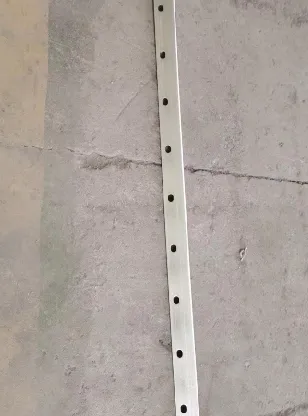loading...
- No. 9, Xingyuan South Street, Dongwaihuan Road, Zaoqiang County, Hengshui, Hebei, China
- admin@zjcomposites.com
- +86 15097380338
- Welcome to visit our website!
Durable and Slip-Resistant Fiberglass Treads for Safe Outdoor and Indoor Stair Solutions
The Benefits and Applications of Fiberglass Treads
In the realm of construction and safety, the materials we choose play a pivotal role in ensuring durability and performance. One such remarkable material that has gained significant traction in various industries is fiberglass. Among its numerous applications, fiberglass treads stand out for their exceptional properties, making them an ideal choice for staircases, walkways, and other surfaces that require enhanced safety and longevity.
Fiberglass treads are essentially slip-resistant steps made from a composite material that offers a high degree of strength and resilience. These treads are designed to withstand harsh weather conditions, heavy foot traffic, and potential impacts, making them ideal for both indoor and outdoor use. The composition of fiberglass, which includes glass fibers embedded in a resin matrix, endows treads with qualities such as corrosion resistance, UV stability, and lightweight characteristics. This unique blend ensures that they do not warp or degrade over time, unlike traditional materials like wood and metal.
One of the primary advantages of fiberglass treads is their superior slip resistance. Many industries, particularly those related to construction, manufacturing, and transportation, face challenges associated with slippery surfaces. Wet, oily, or icy conditions can lead to accidents and injuries. Fiberglass treads are generally equipped with textured surfaces or coatings that provide excellent traction, significantly decreasing the likelihood of slips and falls. This feature is invaluable in settings where safety is paramount, such as industrial plants, warehouses, and commercial facilities.
fiberglass treads

In addition to their safety features, fiberglass treads are designed with maintenance in mind. Unlike wooden treads that can rot, splinter, or require frequent painting and upkeep, fiberglass treads maintain their appearance and functionality with minimal effort. They are easy to clean and often resistant to staining, making them a practical choice for facilities requiring a hygienic environment, such as food processing plants and hospitals.
Another compelling aspect of fiberglass treads is their versatility in design and application. Available in a range of colors, sizes, and finishes, fiberglass treads can be customized to fit specific aesthetic and practical requirements. This adaptability allows architects and builders to incorporate them seamlessly into various projects, from residential homes to large-scale commercial developments. Furthermore, their lightweight nature simplifies installation, reducing labor costs and time, which can be a crucial factor in project management.
Sustainability is another topic gaining significance in construction materials, and fiberglass treads are no exception. Many manufacturers are now producing fiberglass products using recycled materials, making them a more eco-friendly choice. By choosing fiberglass treads, builders and property owners can contribute to reducing environmental impact while benefiting from a long-lasting and resilient solution.
In conclusion, fiberglass treads represent a significant advancement in materials used for safety and construction applications. With their unparalleled slip resistance, low maintenance needs, design versatility, and potential for sustainability, they are becoming a preferred choice among architects, builders, and facility managers. As we look towards a future focused on innovation and safety, incorporating fiberglass treads into building designs can lead to improved safety outcomes and enhanced overall performance. Whether for indoor staircases or outdoor walkways, fiberglass treads are not just a practical choice; they offer a commitment to quality and safety that is essential in today’s world.
-
GRP Structures: The Future of Lightweight, High-Performance EngineeringNewsJun.20,2025
-
FRP Water Tank: High-Performance Storage for Corrosive and Clean Water SystemsNewsJun.20,2025
-
FRP Square Tube: The New Industry Standard for Chemical and Structural ApplicationsNewsJun.20,2025
-
FRP Pultruded Profiles: The Ultimate Choice for Lightweight Structural StrengthNewsJun.20,2025
-
FRP Handrails: The Safer, Smarter, and Stronger Choice for Modern InfrastructureNewsJun.20,2025
-
FRP Grating: The Smart Solution for Durable, Lightweight Industrial FlooringNewsJun.20,2025
-
Why Choose a Galvanized Water Tank for Your Storage NeedsNewsMay.21,2025
